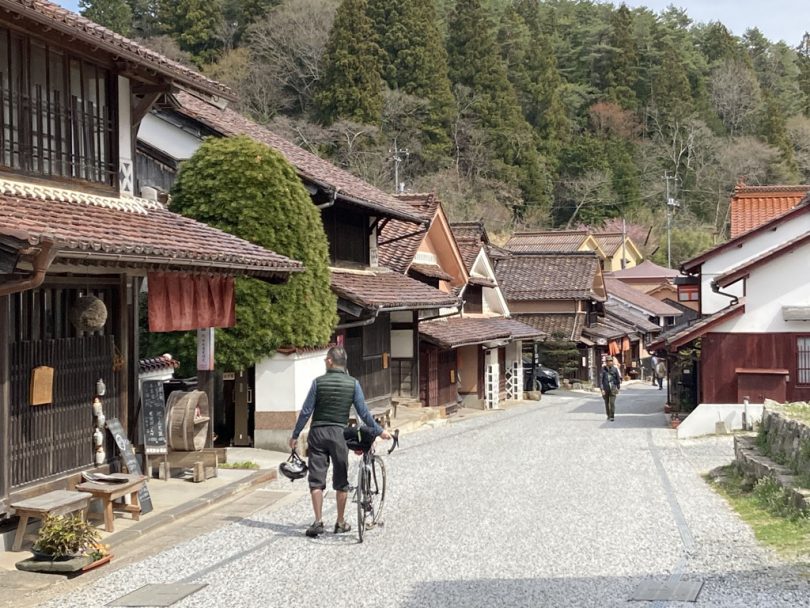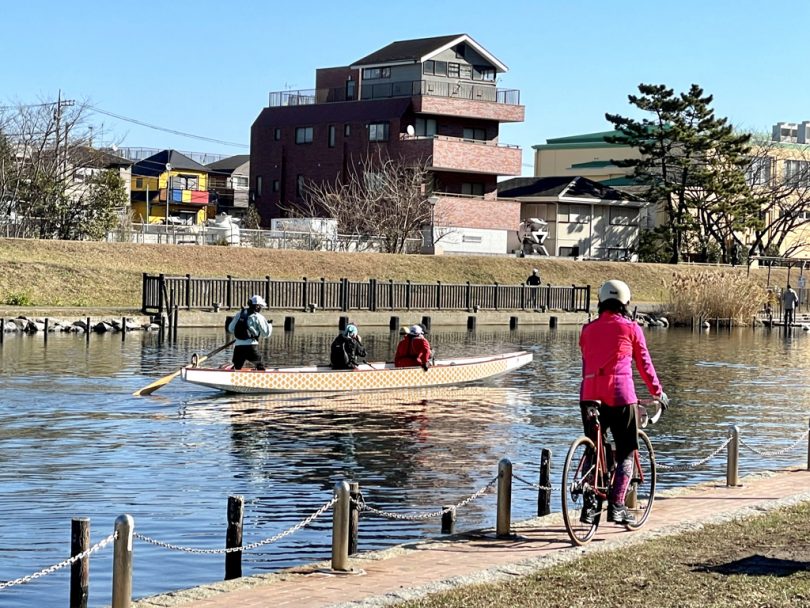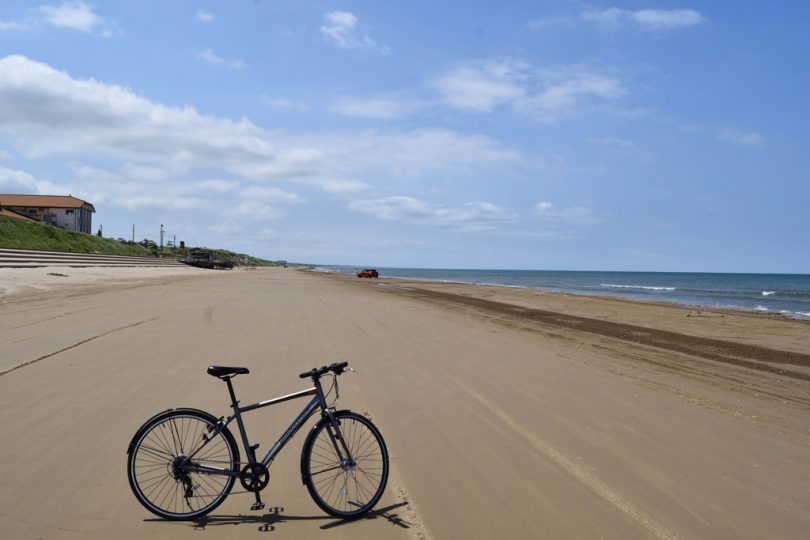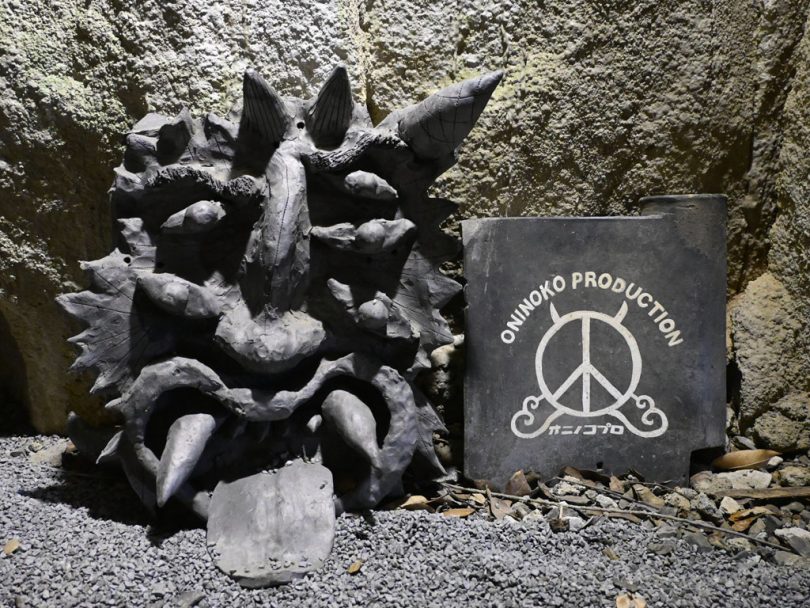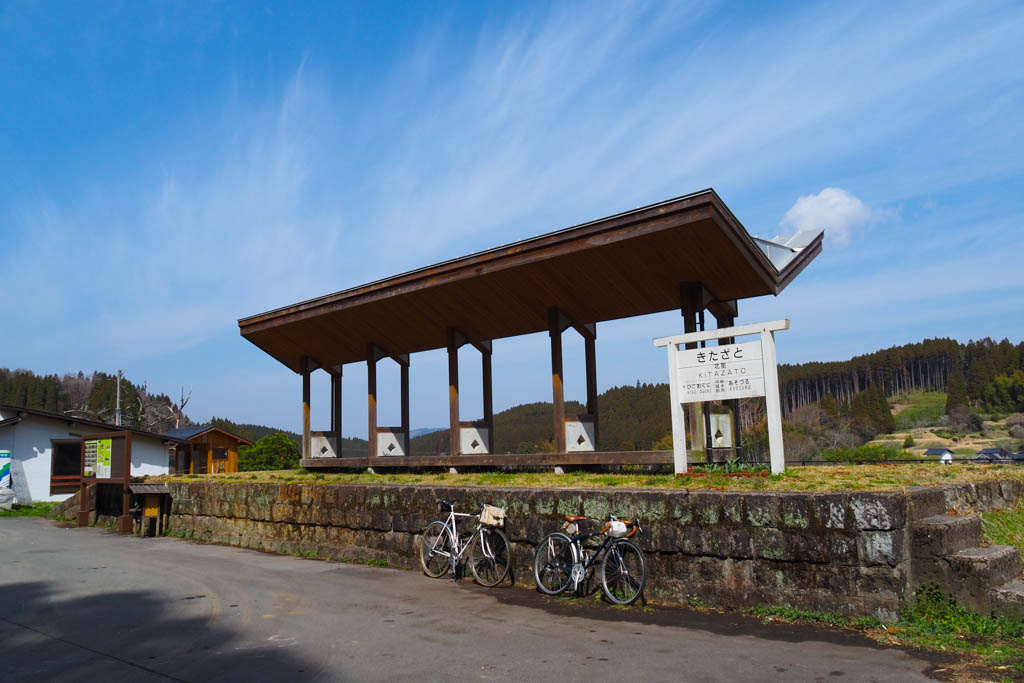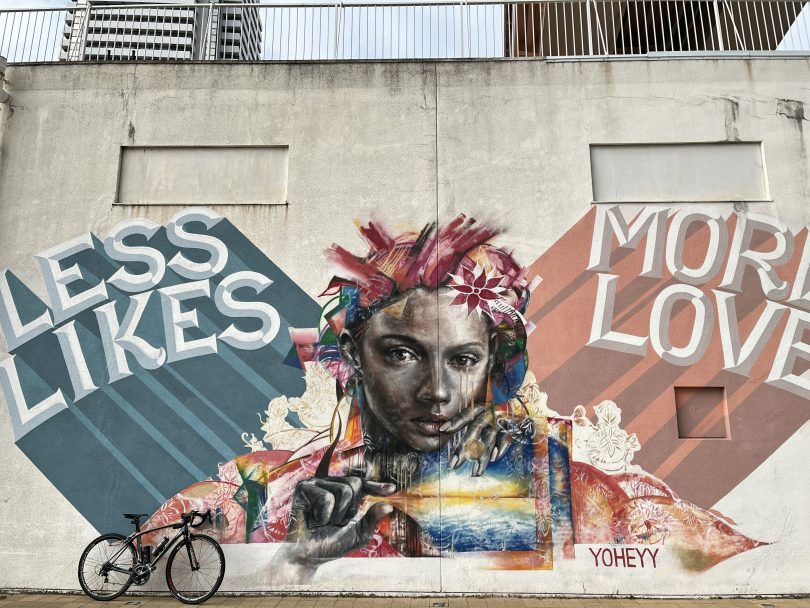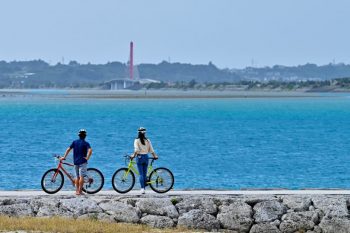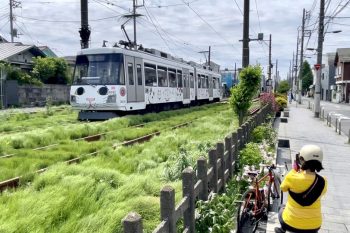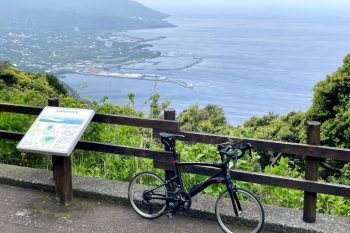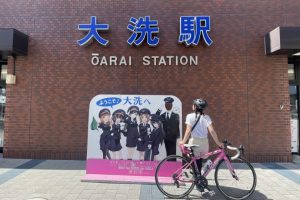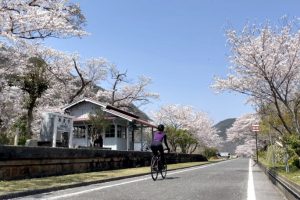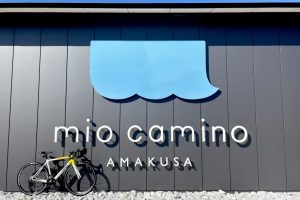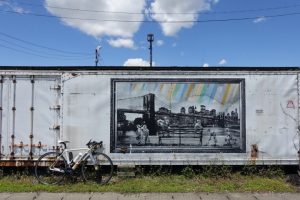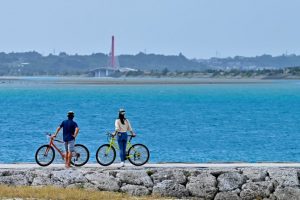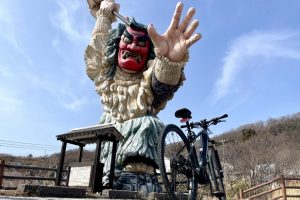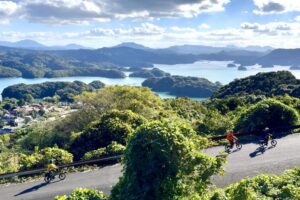The cycling road connecting Fukuyama Station to Tosaki Port is called “Shiomachi Kaido”.
The route connects the riverside to the seaside, and is comfortable to ride while feeling the sea breeze. If you continue across the island, you can also go to the “Shimanami Kaido”, but this time, the goal will be Matsunaga Station.
Contents
- Starting from Fukuyama Station
- Cross the bridge to the other side of the river
- Tomonoura, where the atmosphere of the Edo period still remains
- Strolling through the streets with a sense of history
- Tomonoura’s symbolic nightlight
- Kannon-do stands on top of a cliff
- Goal at Matsunaga Station
- Course Introduction
- Summary
Starting from Fukuyama Station
JR Fukuyama Station is a convenient station where Shinkansen bullet train also stops.
As you exit the north exit of the station, you can see Fukuyama Castle in front of you. If you look down at your feet, you will see a manhole with a design of “Carp Boy” (the character of Carp Hiroshima baseball team) in armor, which was installed to commemorate the 400th anniversary of the construction of Fukuyama Castle.
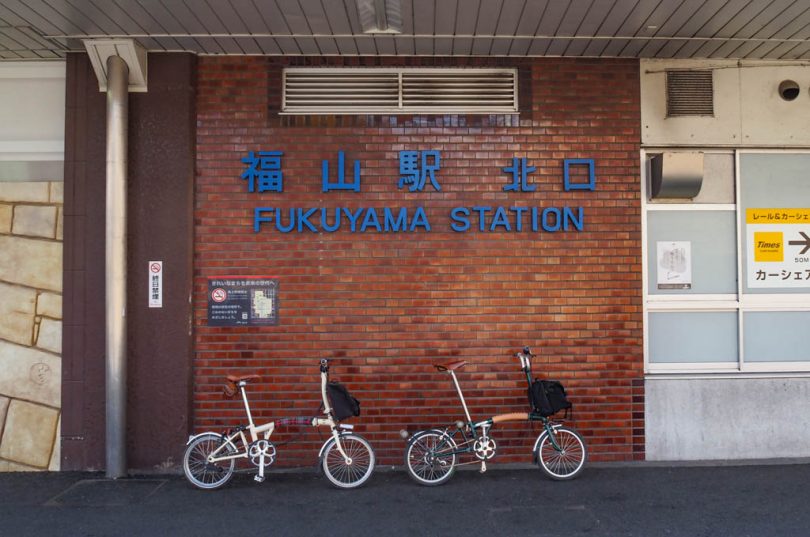
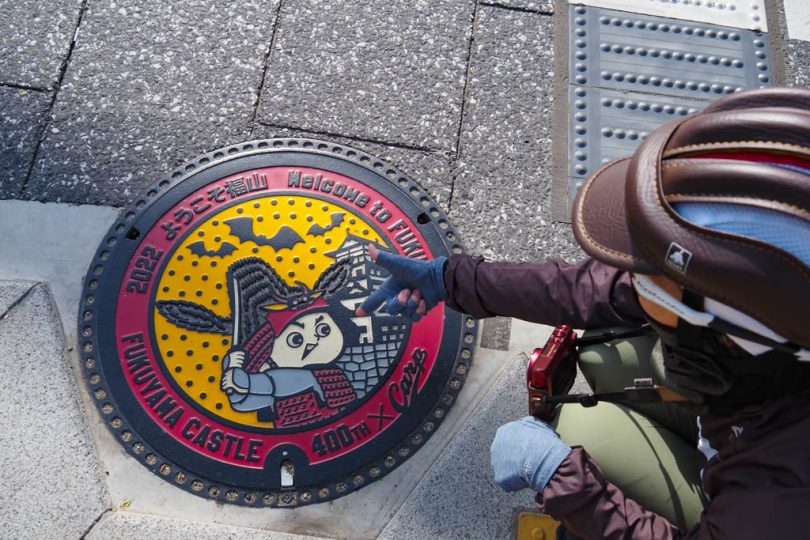
Ascending the stairs, you can see the whole of Fukuyama Castle, so stop by before the start of the tour.
The castle tower was destroyed by fire during the war, but it has been rebuilt and the interior is used as a local museum, displaying artifacts from the relics and ruins of successive feudal lords.
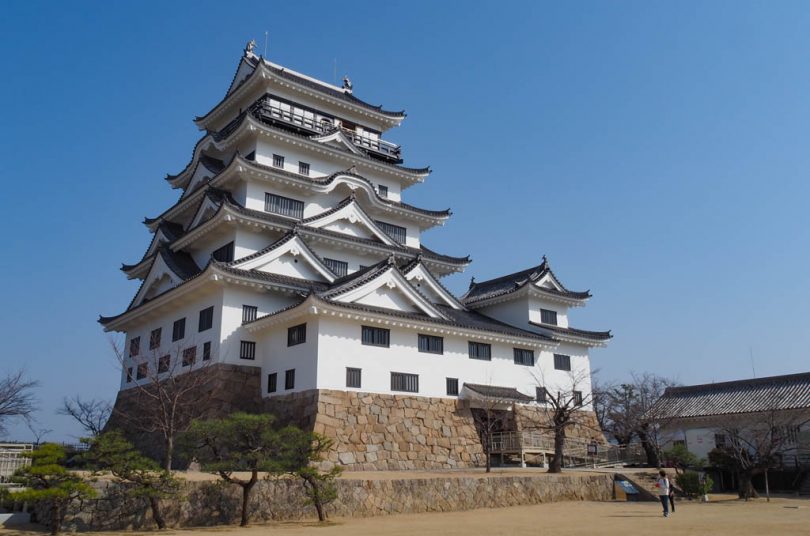
Ride through the city center to Ashida River
Go around the south exit of the station and follow the bicycle blue line.
When you reach Prefectural Road22, turn right to Ashida River. Along the river, you will find a well-maintained cycling path, which is easy to ride along.
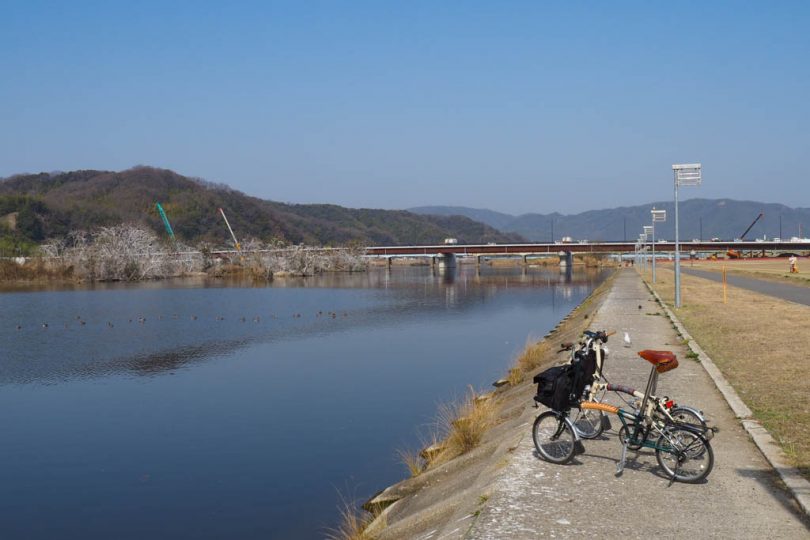
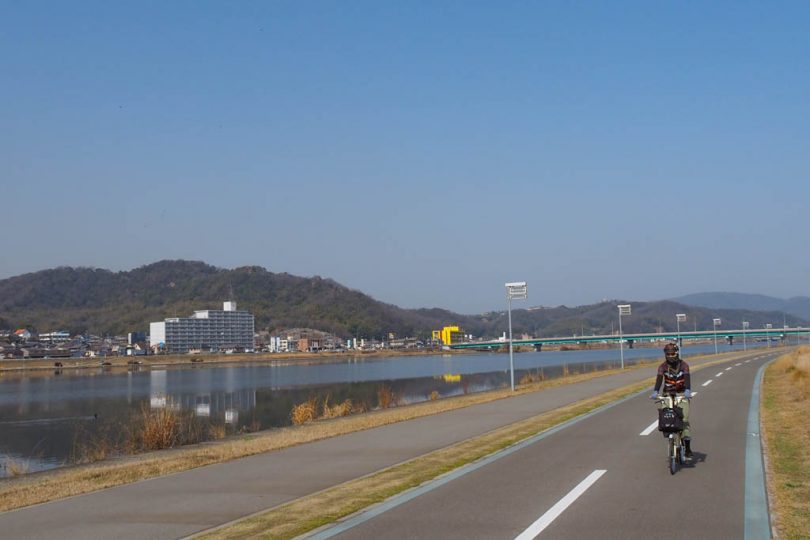
After passing under Ashida River Bridge, which is a magnificent cable-stayed bridge, the cycling path ends and goes up to a public road.
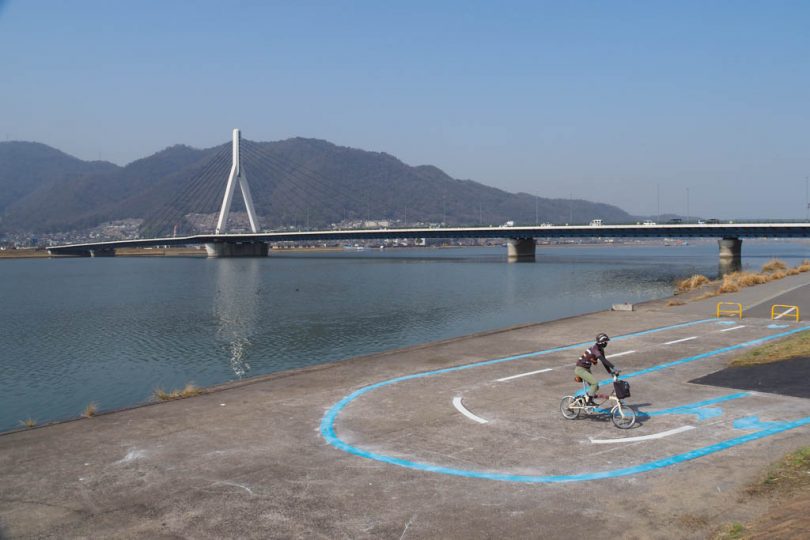
The route to Tomonoura is marked with blue line distance markers, so it is easy to recognize.
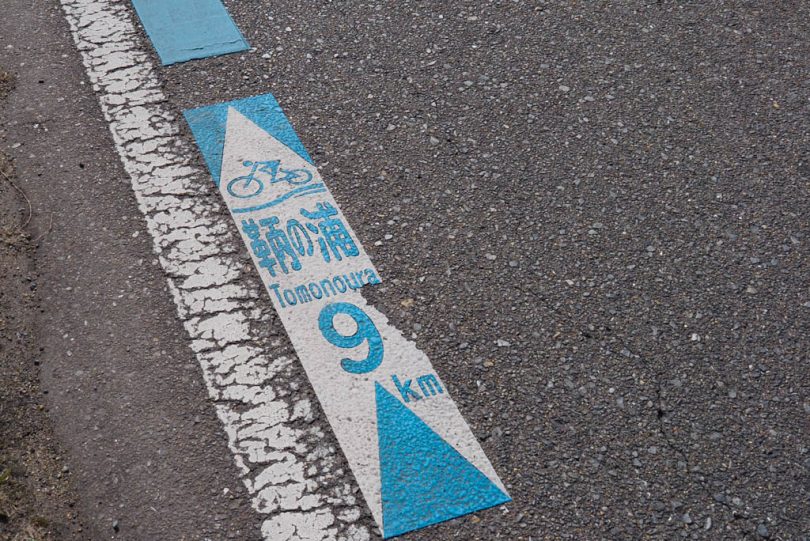
Cross the bridge to the other side of the river
Follow the public road to Kawaguchi Bridge. From here, cross to the other side of the river. The bridge is a road bridge used in conjunction with the Ashida River estuary weir.
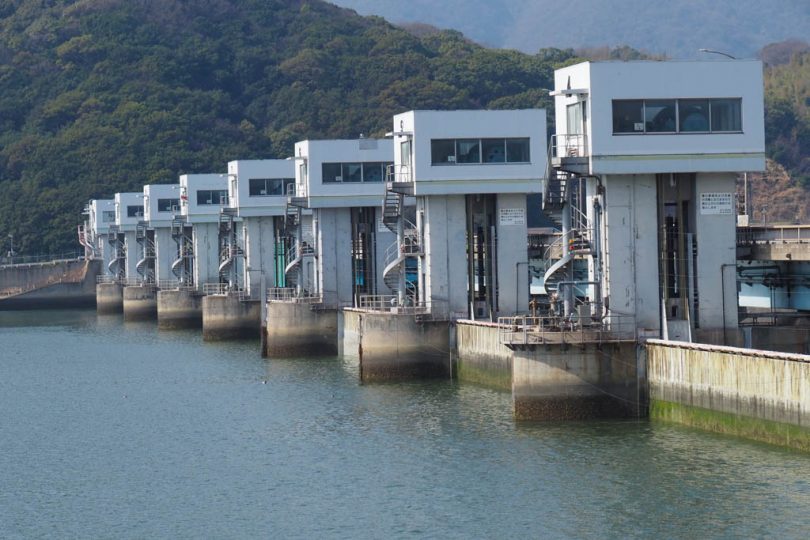
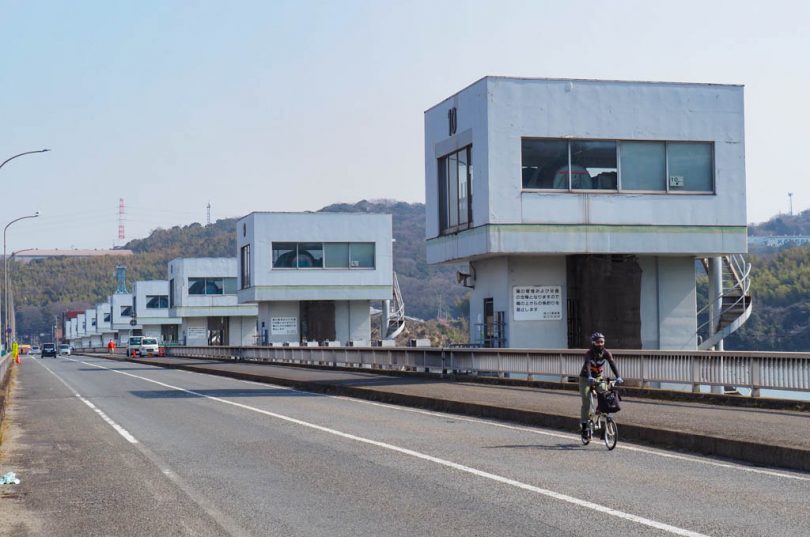
After crossing over to the other side of the river and going up a slight slope, you will come to Prefectural Road22 and turn left.
After descending a gentle slope, the sea spreads out before your eyes, and you will be on a coastal route.
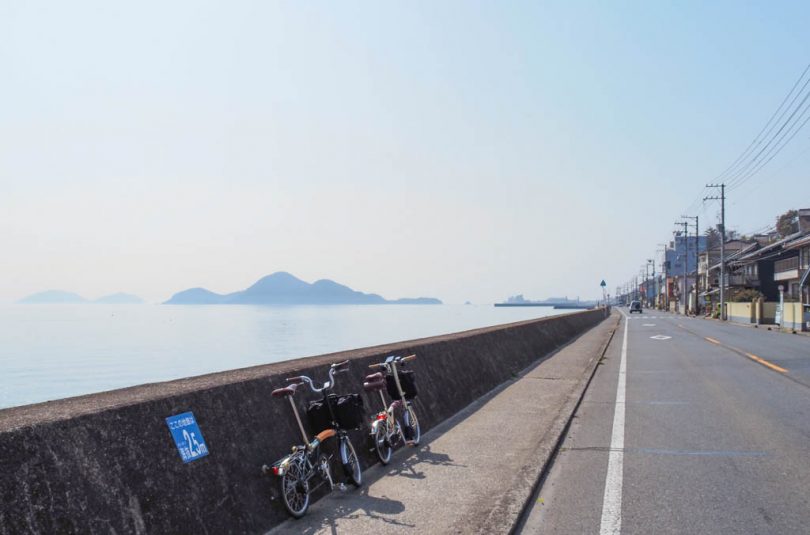
Stopping by Canola Flower Festival
While cycling along the coast, we stopped by the “Excel Tomonoura” facility, which was holding a nanohana (canola flower) festival.
There is also an observatory where you can look out over the sea from a field of canola flowers spreading out on a slope facing Seto Inland Sea.
It is nice to see the islands of the Seto Inland Sea through the rape blossoms.

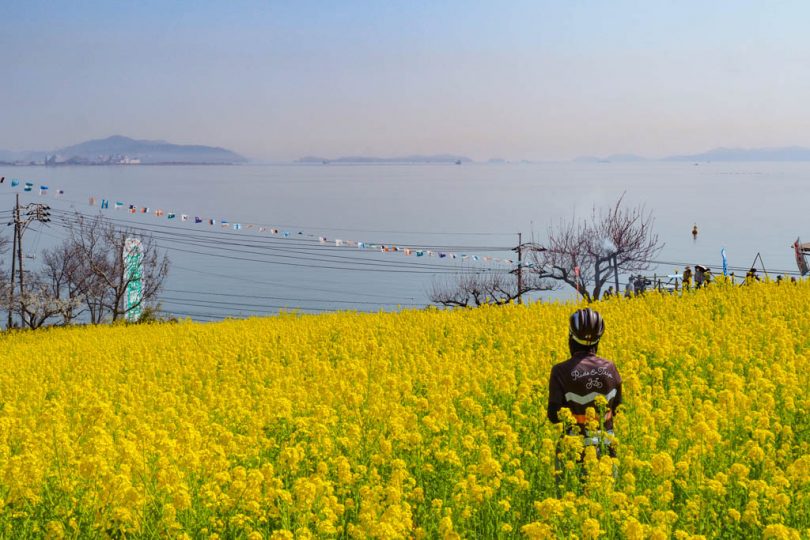
Tomonoura, where the atmosphere of the Edo period still remains
A little further on from the field of canola flowers, you will enter Tomonoura area.
Next to the passenger boat terminal, there is a signboard of Tomonoura, which makes you want to take a commemorative photo.
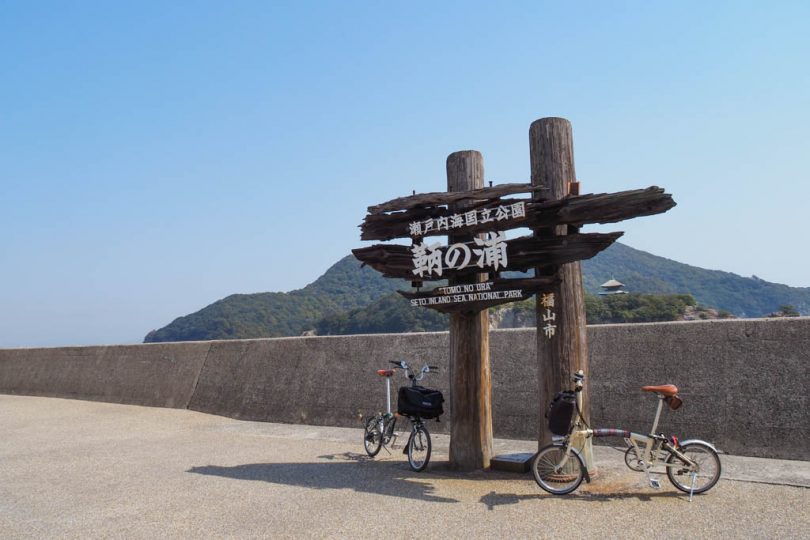
From the terminal, “Heisei Iroha Maru” runs across to Sensui Island on the opposite shore. The ship was inspired by “Iroha Maru,” a steamship operated by Ryoma Sakamoto.
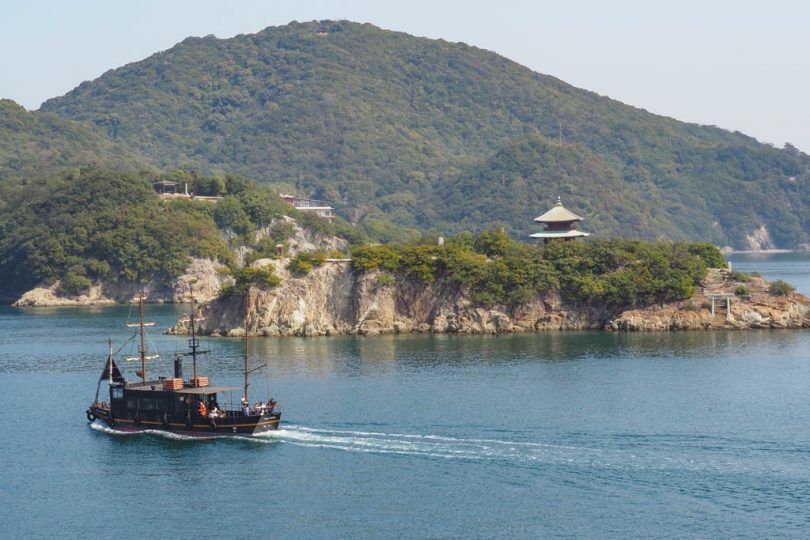
Having Red Breams in Tomonoura
Tomo Town in Fukuyama City, Hiroshima Prefecture is famous for sea breams, and there are many restaurants where you can taste sea breams in the town.
We had lunch at “Tomonoura Fish Restaurant Tai-tei” located right in front of the terminal.
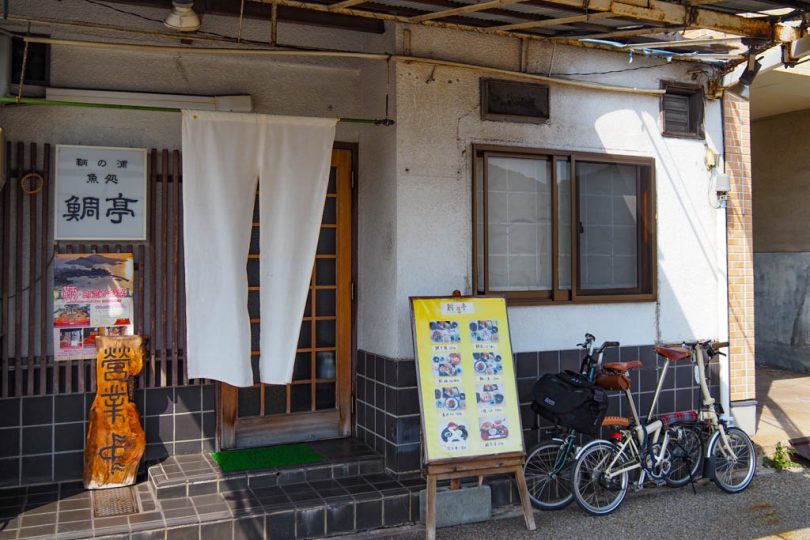
The most popular dish was the “Tai-meshi Deluxe,” which most customers ordered.
The tai meshi (sea breams rice) and fresh sashimi served in a ”hittsu” are excellent.
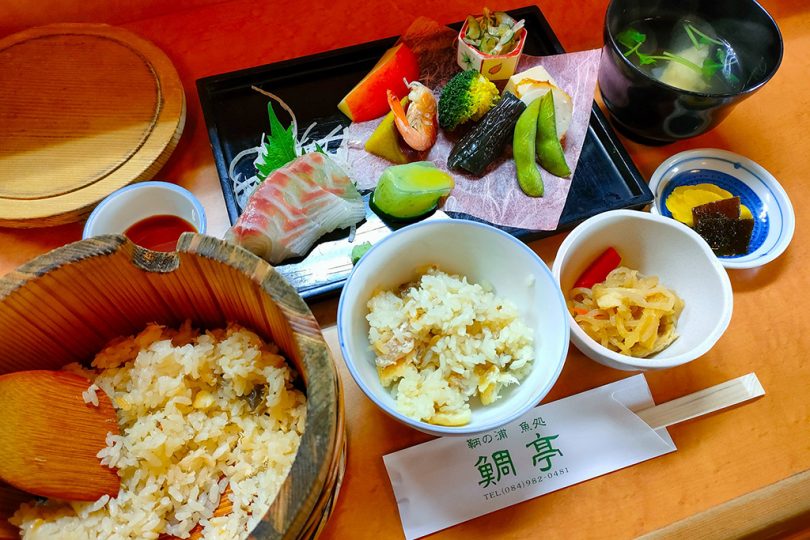
Strolling through the streets with a sense of history
After the meal, we will take a leisurely stroll through Tomonoura.
First, we will stop by Masuya Seiemon’s house, where there is a hidden room where Sakamoto Ryoma hid himself.
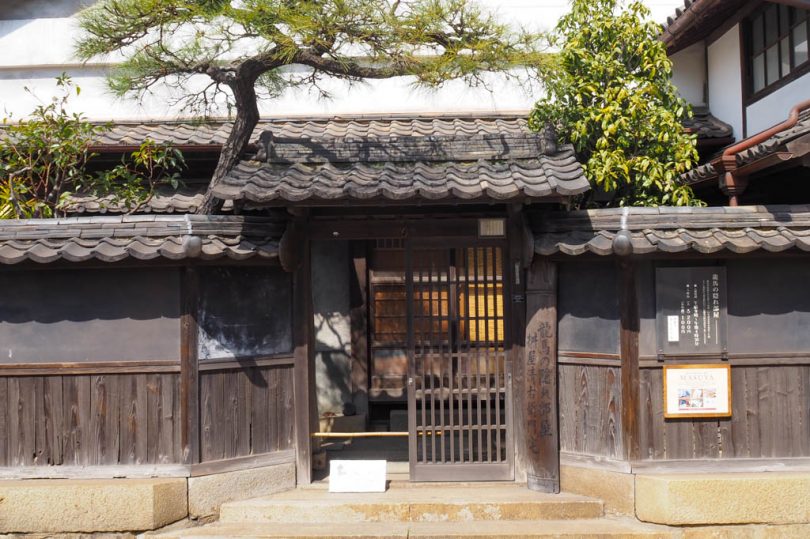
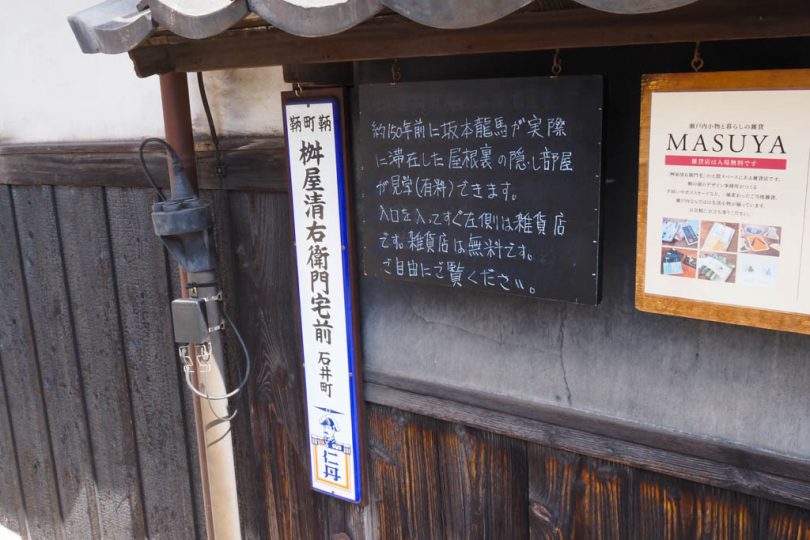
This is the merchant’s house where Ryoma Sakamoto stayed for a few days during the “Irohamaru Incident” that occurred in the late Edo period (Keio 3, 1867), and his hidden room is open to the public. The rooms are open to the public. The explanation panels are in order and are easy to understand.
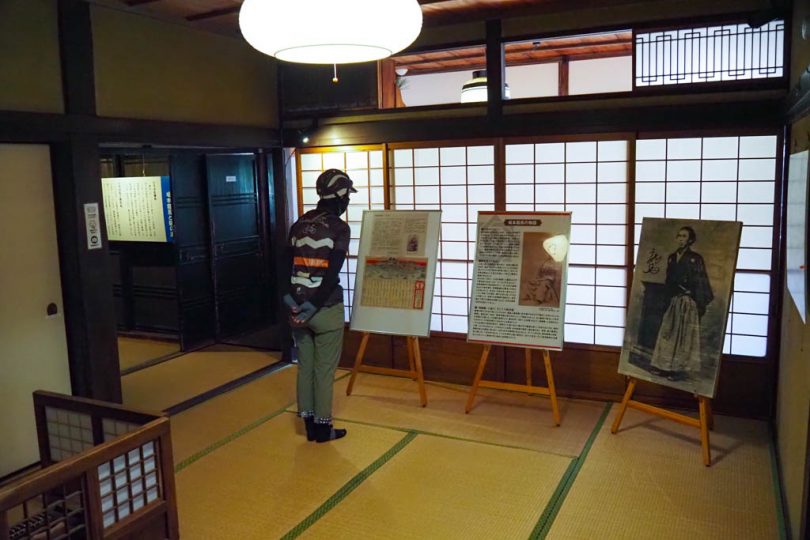
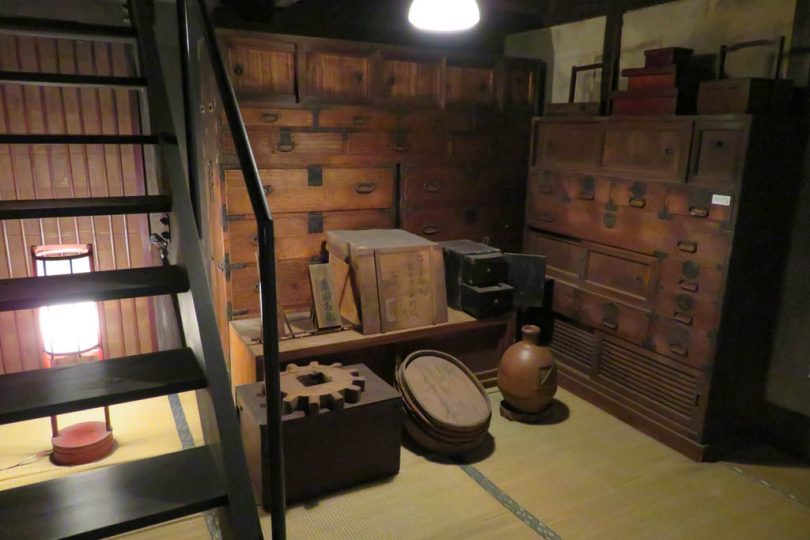
When we went up to the second floor, we found a hidden room with a ceiling of just over 6 tatami mats. The room is larger than expected.
I wondered if this is where Sakamoto Ryoma stayed and breathed his last breath.
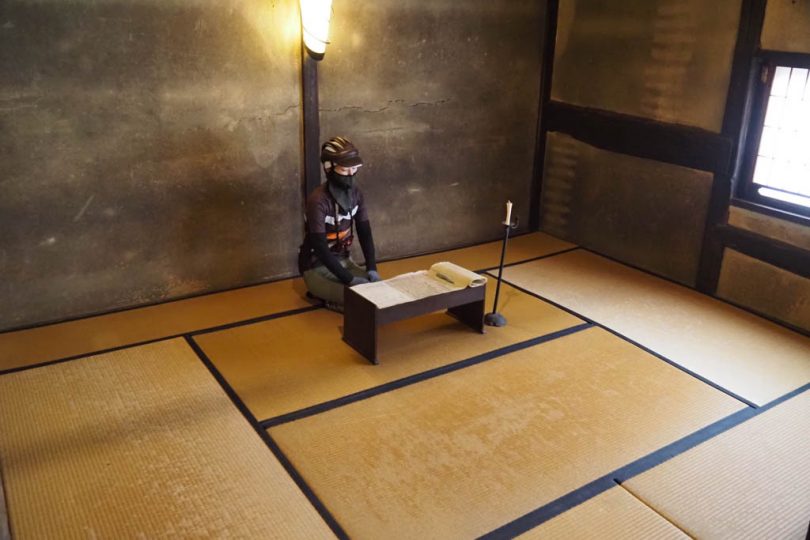
Riding through narrow back alleys
Riding along a narrow alleyway, you will see a torii gate. This stone torii gate, called “toribusuma torii”, is designated as an important cultural property by Hiroshima Prefecture. Nunakuma Shrine was built to pray for safety on te sea route.
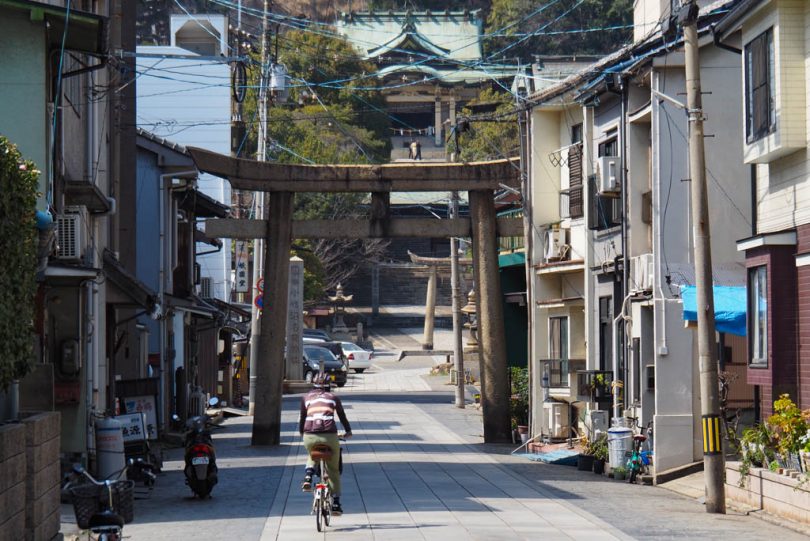

After leaving the shrine, turn left near Seikan-ji Temple and you will find the “Ssayaki (whispering) Bridge,” said to be the shortest bridge in Japan. Be careful not to miss it, as the bridge is so short that it can be crossed with one or two large steps.
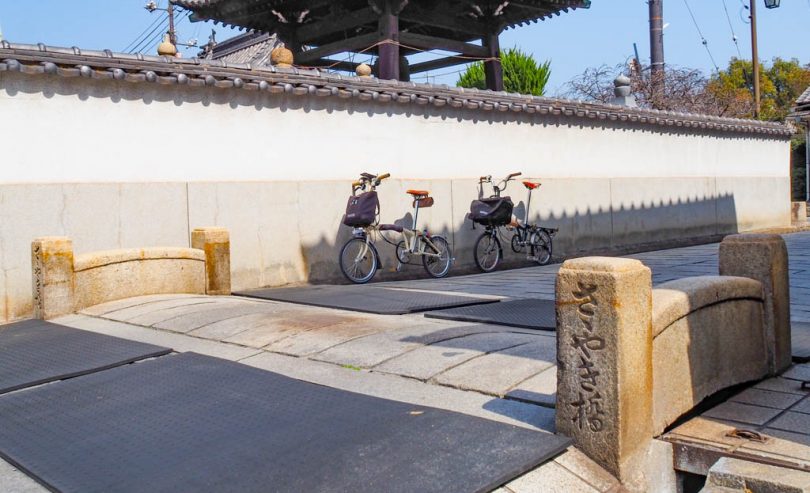
It is pleasant to ride a bicycle through narrow alleys, but if there are many people, you may need to take care to get off your bicycle and push it along.
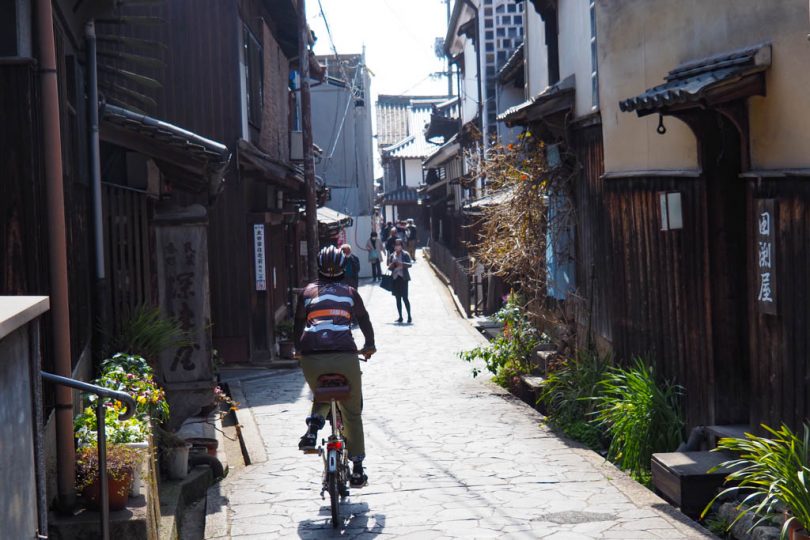
Tomonoura’s symbolic nightlight
The 5.5-meter-high nightlight, which has guided ships in and out of Tomonoura, is one of the largest surviving examples of its kind from the Edo period! The size of the light can be clearly seen when viewed up close.
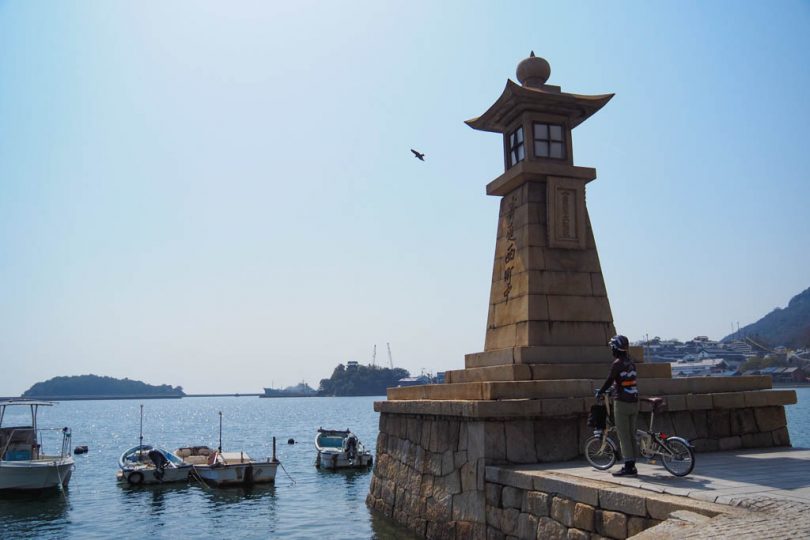
It is also quite impressive when viewed from the opposite shore.
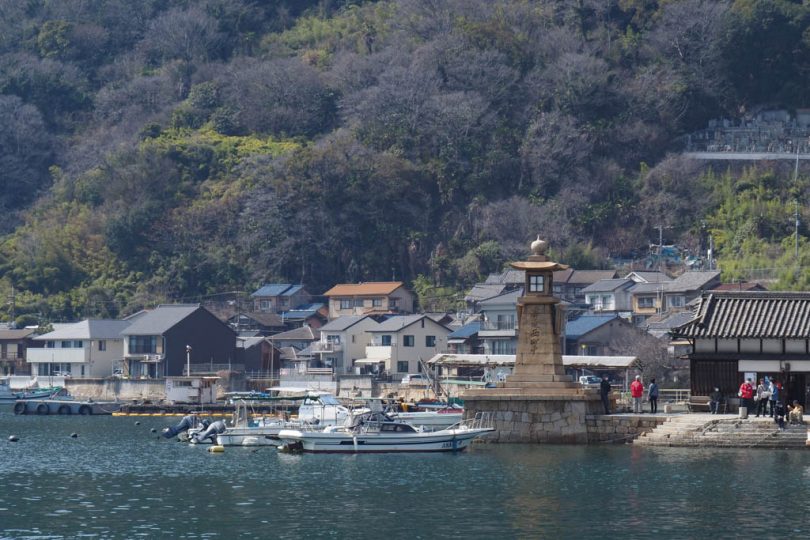
We dropped by a townhouse in Tomonoura which was designed by Hayao Miyazaki.
This was also a historic townhouse where Ryoma Sakamoto spoke with the owner, but it was on the verge of being demolished. The restaurant displays the design drawings of Hayao Miyazaki, the director who collaborated with the restaurant at that time.
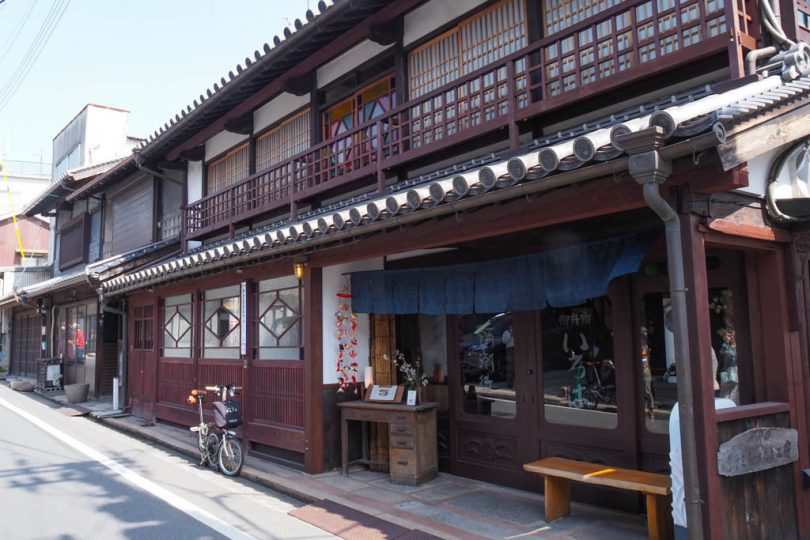
The most scenic spot in Tomonoura
The main hall of Fukuzenji Temple, which stands on a hill near the ferry terminal, was built in the Heian period (794-1185), and the adjacent Kyakuden (guest house) was built in the Edo period (1603-1868). This place was also the site of the “Irohamaru Incident” and was visited by Ryoma Sakamoto.
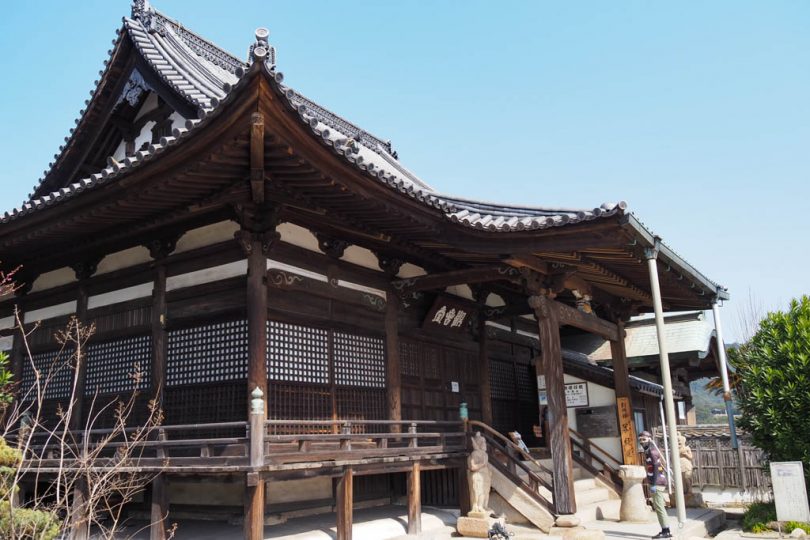
The words “Nitto Dai-ichi Keisho” written above the window frame are the words of a Korean envoy who visited in 1711 and praised it as “the most beautiful scenic spot east of Korea.”
The view from the exquisite hilltop is a sight you should definitely visit and see.
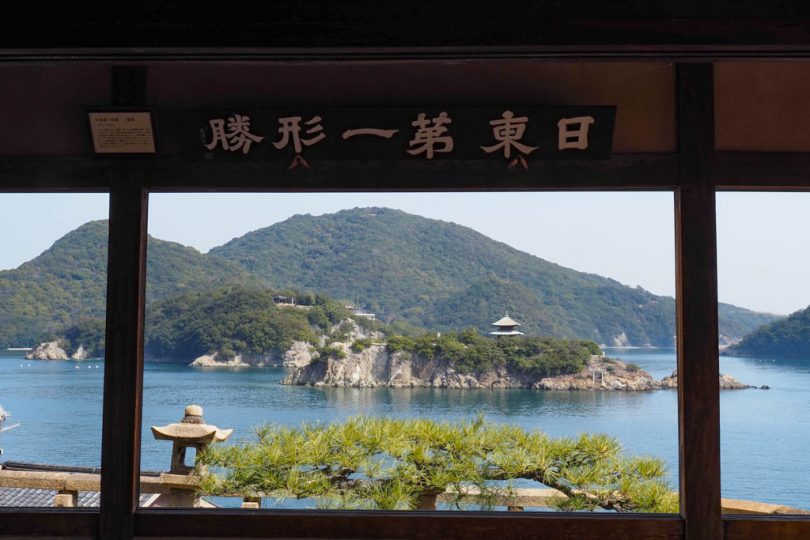
At this point, we will leave Tomonoura area and continue on. There is so much to see and do in Tomonoura that time will fly by.
As we were riding, a two-light signal with only red and blue lights appeared in front of us. It is quite an unusual traffic light. It suddenly changes to red, which makes you a little nervous when you are on a bicycle.
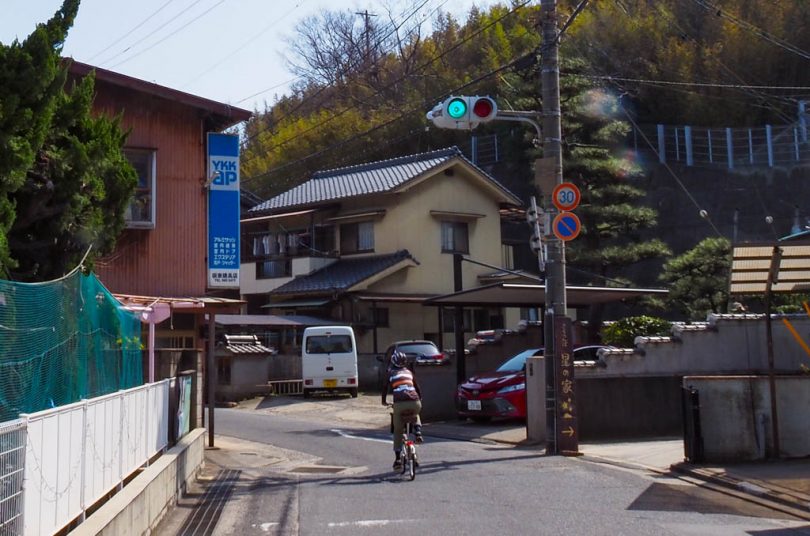
Kannon-do stands on top of a cliff
At the branch of the peak up Prefectural Route47, turn right to take Fukuyama Green Line, a scenic road. This is a popular route with outstanding views, but this time we will go straight down.
Turn left on the narrow road immediately after descending the hill. At the end of the path, follow the signpost to Abuto-Kannon (Goddess of Mercy).
At the end of the narrow trail is Abuto-Kannon. The vermilion-lacquered Kannon-do, built at the head of Cape Abuto, is a temple of Rinzai sect of Zen Buddhism, and is designated as a national important cultural property.

The aisle of Kannon-do is narrow and the floor is slanted toward the sea, so even if you are not afraid of heights, you may feel your feet stagger.
The view from the Kannon-do is spectacular, but the view from the stone pagoda called “Ashizuri-san,” located at the bottom of the cliff, is also dynamic and picturesque.

Beautiful double-arch bridge
As you return to Prefectural Route47, you will see Uchiumi Bridge, a large double-arch bridge that crosses over to Tajima. The bridge is curved in a “く”(”ku” in Japanese) shape to minimize the impact on navigable waters.
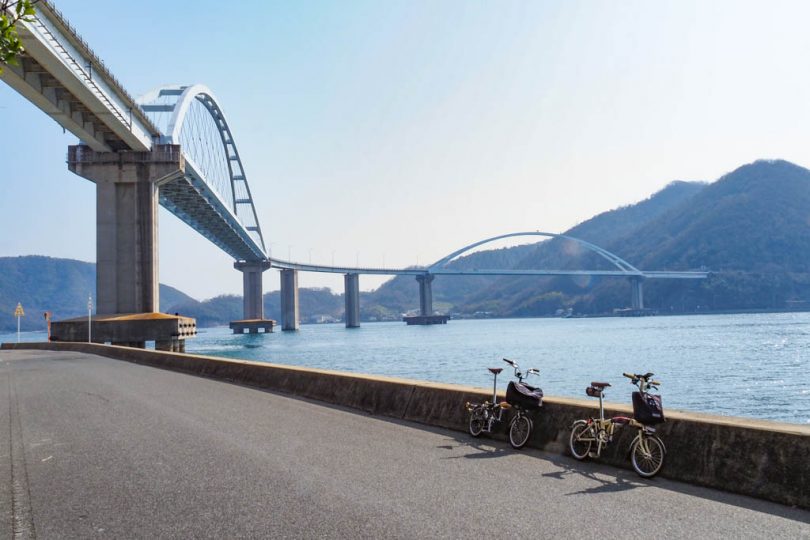
As you ride along the coast, you will see a large ship. It is a shipbuilding company called Tsuneishi Shipbuilding. Getting close to the ship, you can clearly see the size of the cargo ship.
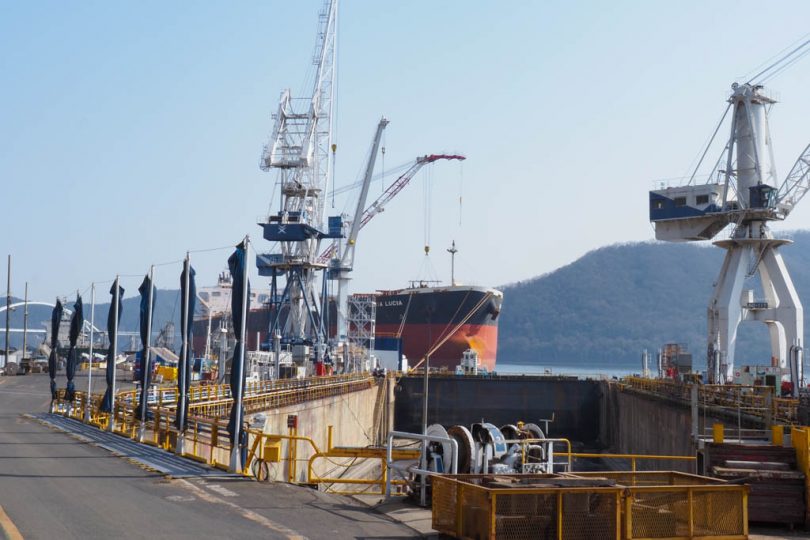
It is also large when seen from a little distance away from the shore!

Goal at Matsunaga Station
Ride with a view of Matsunaga Bay on your left. It is nice to be so close to the sea.
After pedalling for a while, you will reach the city center, and if you turn left at the south end of Nagawa Island intersection and go straight, you will reach Matsunaga Station.
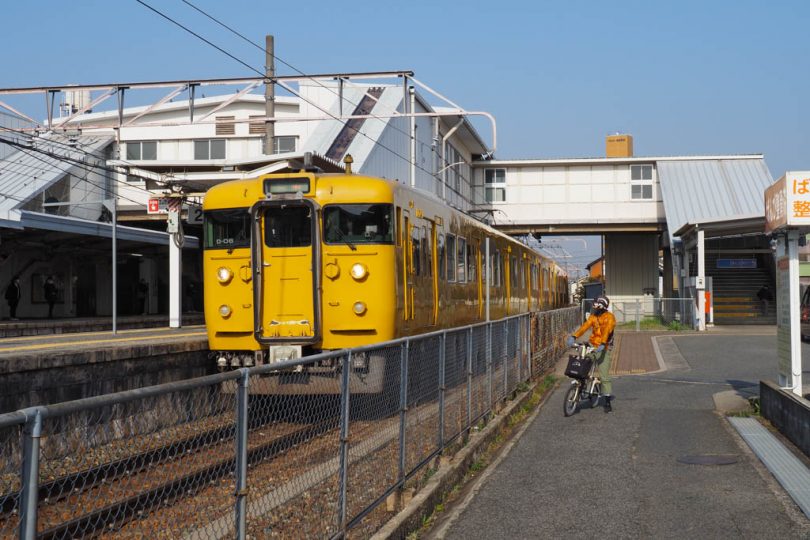
Course Introduction
▼ Fukuyama Cycling Road “Shiomachi Kaido”
https://www.city.fukuyama.hiroshima.jp/soshiki/kanko/154793.html
Summary
We have introduced a route cycling along Numakuma Peninsula from the Shimomachi Kaido, a cycling road connecting Fukuyama Station to Tosaki Port, to Matsunaga Station. You can also head to Onomichi from Tosaki Port, so it can be arranged.
Tomonoura is a place where you can feel the history, and it is a sightseeing spot where you should spend a considerable amount of time to visit.


